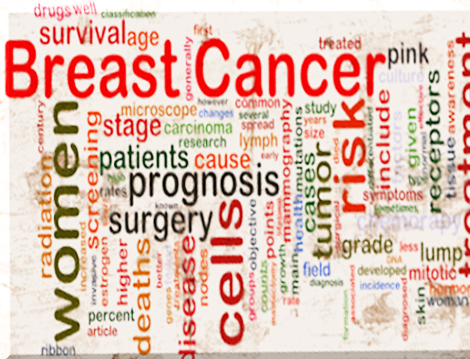
How Breast Cancer Patients Benefit from Physical Therapy
February 20, 2017
8 Benefits of Physical Therapy
Cancer treatments vary widely, depending upon the stage of cancer that has developed. Cancer is a debilitating disease that affects the body and an individual's self-image. Individuals may experience weakness, nausea and vomiting, along with hair loss or thinning and mouth sores.
- Easing pain
- Reducing fatigue
- Promoting bone density
- Stimulating the immune system
- Reducing stress and depression
- Ridding the body of toxins
- Decreasing swelling and inflammation
- Treating lymphedema
People with breast cancer often lose their appetite which can lead to serious nutritional deficits and increases the risk of infections. Bleeding, diarrhea, anemia, and early menopause or infertility may also occur. Many individuals lose weight during breast cancer treatments, while others gain weight due to reduced activity levels.
Breast cancer has a strong emotional and psychological component that can be alleviated through physical therapy. Fear, poor sleep, worry and depression are common, along with loss of sexual function that further adds to an already stressful situation.
How Breast Cancer Patients Benefit from Physical Therapy
 One in every eight women will be diagnosed with invasive breast cancer during their lifetime Another 61,000 women will be diagnosed with non-invasive breast cancer, along with 2,600 men. Physical therapy can help, ease the symptoms of treatment and aid in rehabilitation following reconstructive surgery.
One in every eight women will be diagnosed with invasive breast cancer during their lifetime Another 61,000 women will be diagnosed with non-invasive breast cancer, along with 2,600 men. Physical therapy can help, ease the symptoms of treatment and aid in rehabilitation following reconstructive surgery.
The chance of developing breast cancer has a genetic component and those with a mother, daughter or sister who was diagnosed are at greater risk. Cancer doesn't just affect breast tissue. Patients may experience lung and breathing problems, bone loss and even cognitive impairment.
Painful joints and muscles are common, but even knowing what to expect during treatment can come as a shock when the effects begin to appear on an individual's own body. It's disheartening for breast cancer patients to discover that they can't perform ordinary household tasks due to fatigue or loss of muscle strength.
For advanced breast cancers that have spread into surrounding lymph nodes under the arms, patients may choose a mastectomy and reconstructive surgery. The method restores symmetry to the body and will require measures to maintain mobility and flexibility.
Treatment may also be required to address or treat lymphedema, a condition in which fluid doesn't drain correctly and collects in tissues. Well-known celebrity and two-time cancer survivor, Kathy Bates, has spoken publicly about her battles with lymphedema and the benefits of physical therapy for the condition.
A Breast Cancer Patient's Best Friend
 Therapies for breast cancer will vary widely depending upon the needs of the individual and your physical therapist is one of the first lines of defense against the many symptoms associated with breast cancer treatment, surgical solutions, and the effects that can linger long after the cancer has been removed.
Therapies for breast cancer will vary widely depending upon the needs of the individual and your physical therapist is one of the first lines of defense against the many symptoms associated with breast cancer treatment, surgical solutions, and the effects that can linger long after the cancer has been removed.
One of the most beneficial treatments for cancer patients is exercise to prevent bone loss and maintain strength. A customized exercise program will be created that factor in the type of cancer treatments you're receiving, your overall health and physical condition. It's important to remember that exercise doesn't have to be high-impact to be effective and assisted methods are available for those who lack strength or are unable to fully participate in the therapy.
Your physical therapist has multiple methods to help you attain the exercise you need, from yoga and tai-chi to clinical Pilates and hydrotherapy. Your exercise prescription will include movements that help build and maintain core strength, stability and coordination. Electro-stimulation may also be utilized.
If lymphedema is a problem, your physical therapist can help with treatments for drainage and compression sleeves to aid in reducing swelling and fluid retention. Physical therapy can also help you with shortness of breath due to fluid that may collect around the lungs.
Therapeutic massage addresses a multitude of symptoms associated with breast cancer treatment. It relieves pain and inflammation, stimulates your immune system, and relieves stress within the body. Another benefit is that it stimulates your body to release "feel-good" endorphins that relieves anxiety. Massage therapy is advantageous for addressing lymphedema, detoxification, stimulating the nervous system, and scarring that may occur during post-mastectomy and reconstructive services.
Your physical therapist can assist you with nutritional counseling and dietary supplements to ensure you're obtaining the right mix of nutrients. Supplements can be especially helpful if you have little appetite and fatigue prevents you from cooking. Help with assistive aids for sleep and mobility are also available.
Breast cancer strikes fear into the hearts of men and women who have been diagnosed, along with family and loved ones. Your physical therapist has treatments and therapies to help ease the effects of chemotherapy, radiation, mastectomy and reconstructive surgery. Breast cancer and associated treatments can be scary and have far reaching effects. Physical therapy can help you meet those challenges of the body, mind and quality of life.